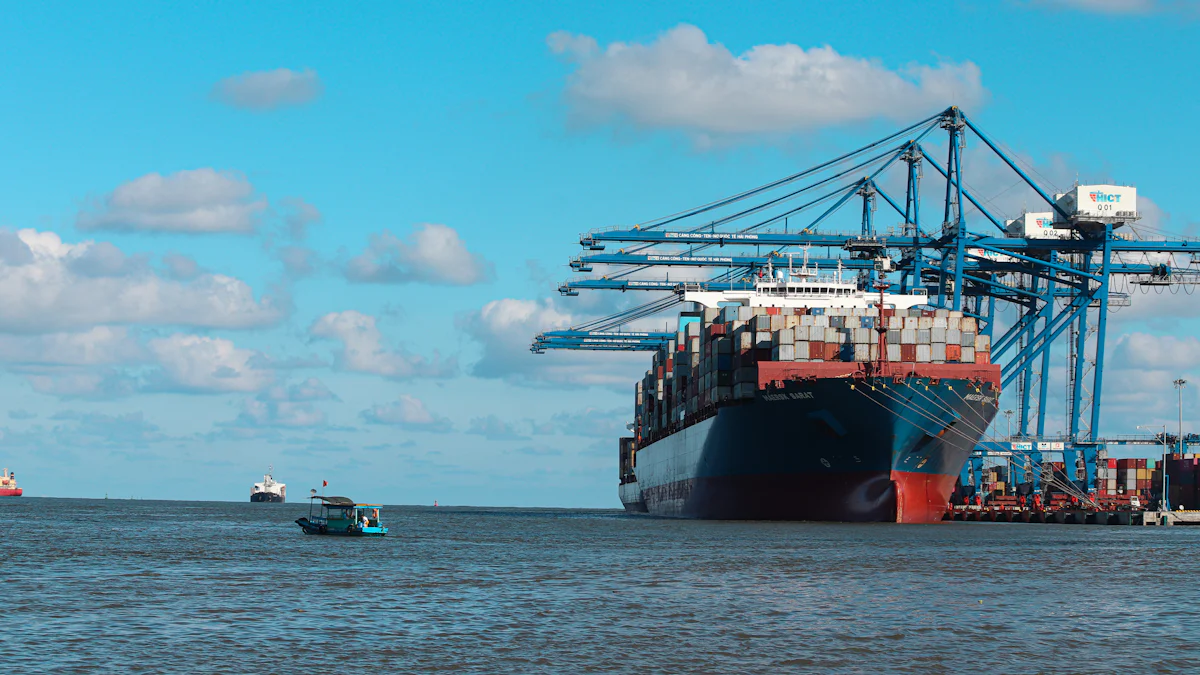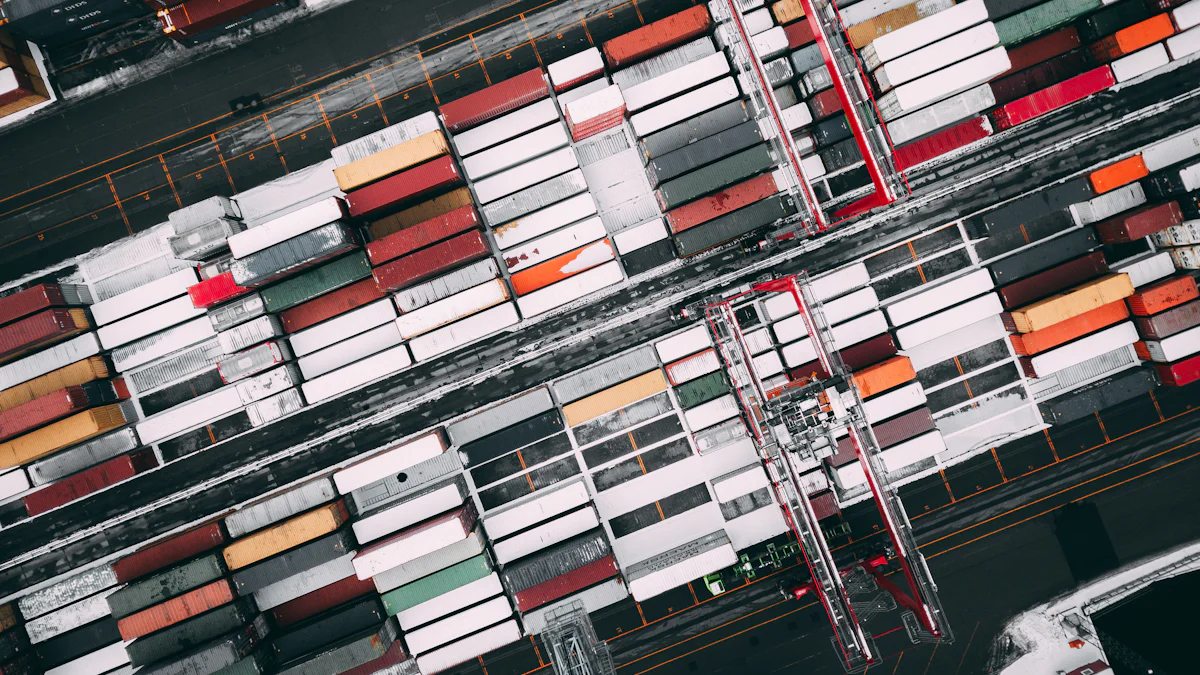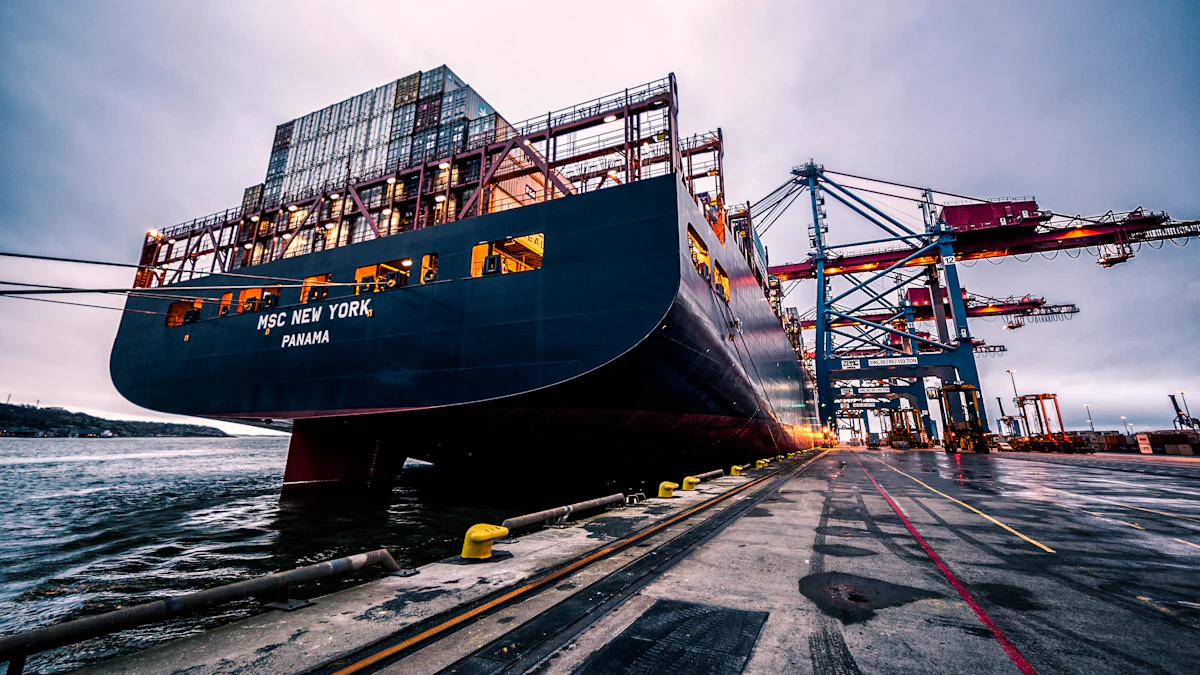The Evolution and Market Value of Cross-Border E-Commerce Logistics

Cross-Border E-Commerce logistics has transformed how businesses reach global markets. The rise of online shopping has fueled the demand for efficient international shipping solutions. Understanding the evolution of this sector reveals how technological advancements and consumer preferences have shaped the market. The market value of Cross-Border E-Commerce logistics is projected to grow significantly, driven by rapid technological advancements and increasing consumer demand for innovative solutions. This growth highlights the importance of staying informed about the latest trends and developments in the industry.
Historical Background of Cross-Border E-Commerce Logistics

Early Days of International Trade
Traditional Logistics Methods
Ancient civilizations engaged in Cross-Border E-Commerce through land and sea routes. Merchants used caravans and ships to transport goods. The Silk Road connected East and West, allowing the trade of silk, spices, and precious metals. The Age of Exploration opened new trade routes. This period expanded global trade and connected different cultures. The Industrial Revolution introduced new technologies. These advancements facilitated easier transport of goods across borders.
Challenges in Early Cross-Border Trade
Despite historical evolution, challenges persisted in Cross-Border E-Commerce. Conflicts over trade routes and maritime passages created obstacles. Strategic control over these routes often led to disputes. Merchants faced difficulties in ensuring the seamless flow of goods. Different regulations and tariffs added complexity to international trade. These challenges hindered the efficiency of early cross-border logistics.
Emergence of E-Commerce
Initial Impact on Logistics
The rise of e-commerce transformed Cross-Border E-Commerce logistics. Online shopping increased the demand for efficient shipping solutions. Traditional logistics methods struggled to keep up with this demand. Companies needed to adapt to faster delivery expectations. The initial impact on logistics was significant. Businesses had to rethink their strategies to meet customer needs.
Technological Advancements
Technological advancements revolutionized Cross-Border E-Commerce logistics. Innovations like big data and artificial intelligence improved efficiency. These technologies enabled better tracking and management of shipments. Automation streamlined processes, reducing human error. Blockchain technology enhanced security and transparency in transactions. These advancements ushered in a new era of digitalization.
Current State of Cross-Border E-Commerce Logistics
Modern Logistics Solutions
Integration of Technology
Technology has revolutionized Cross-Border E-Commerce logistics. Companies now use automation, robotics, and AI to streamline operations. These advancements improve efficiency and reduce errors. Big data analytics helps in predicting demand and optimizing routes. Blockchain technology enhances security and transparency in transactions. These innovations make logistics faster and more reliable.
Role of Third-Party Logistics Providers
Third-party logistics providers (3PLs) play a crucial role in Cross-Border E-Commerce. These companies offer specialized services to handle international shipments. 3PLs manage warehousing, transportation, and customs clearance. Businesses benefit from the expertise and global network of 3PLs. This partnership allows companies to focus on core activities while ensuring efficient logistics.
Market Value Analysis
Economic Impact
The economic impact of Cross-Border E-Commerce logistics is significant. The market value is projected to reach USD 16,454.9 billion by 2032. Increased internet access and demand for unique products drive this growth. Efficient logistics enable businesses to reach global markets. This expansion creates job opportunities and boosts economic development.
Key Market Players
Several key players dominate the Cross-Border E-Commerce logistics market. Companies like FedEx, DHL, and UPS lead the industry. These firms offer comprehensive logistics solutions for international trade. Competitive strategies and expansion initiatives set these companies apart. Reliable logistics providers are essential for success in global trade.
Future Trends in Cross-Border E-Commerce Logistics

Technological Innovations
Automation and AI
Automation and artificial intelligence (AI) will revolutionize Cross-Border E-Commerce logistics. Companies will use robots for sorting and packing goods, speeding up processes. AI will predict demand and optimize delivery routes. This will reduce shipping times and costs. Automated systems will handle repetitive tasks, freeing up human workers for more complex jobs. AI will also enhance customer service by providing real-time updates on shipments.
Blockchain Technology
Blockchain technology will become essential in Cross-Border E-Commerce logistics. This technology will ensure transparency and trust in every transaction. Blockchain will provide secure, tamper-proof documentation. This will be crucial for global trade. Companies will use blockchain to record digital transactions, such as long miles and hours driven. This will improve the security and accuracy of data. Blockchain will prevent fraudulent freight management operations. Many logistics enterprises will adopt this technology in the coming years.
Market Predictions
Growth Projections
The market value of Cross-Border E-Commerce logistics will continue to grow. Projections indicate that the market will reach USD 16,454.9 billion by 2032. Increased internet access will drive this growth. Consumers will demand unique products from around the world. Efficient logistics will enable businesses to meet this demand. The expansion of Cross-Border E-Commerce will create job opportunities and boost economic development.
Emerging Markets
Emerging markets will play a significant role in the future of Cross-Border E-Commerce logistics. Countries like China will see a rise in cross-border import e-commerce consumers. Around 167 million Chinese customers engaged in this sector in 2022. Companies will target these emerging markets to expand their global reach. Advanced technologies will help businesses navigate challenging local operational conditions. Partnerships with local logistics providers will be crucial for success.
The Cross-Border E-Commerce logistics sector has evolved significantly. The journey from traditional trade routes to modern, technology-driven solutions showcases remarkable progress. Staying updated with future trends is crucial. Businesses need to adapt to technological advancements and market shifts. This ensures they remain competitive and efficient.
Understanding the significance of Cross-Border E-Commerce logistics is essential. Efficient logistics operations enable businesses to tap into new markets. This expansion drives economic growth and creates job opportunities. Companies must prioritize innovation and strategic planning. This approach will help them navigate the dynamic landscape of international trade.
See Also
Revealing Breakthroughs: Partner Connections in International E-commerce
Discovering Triumph: The Importance of Supply Chain Transparency in Worldwide E-commerce
Understanding the Effects: Trends in Logistics Risk
Transforming Transportation: The Influence of Supply Chain Advancements
Paving the Way: Tomorrow's Logistics Through Digital Solutions
